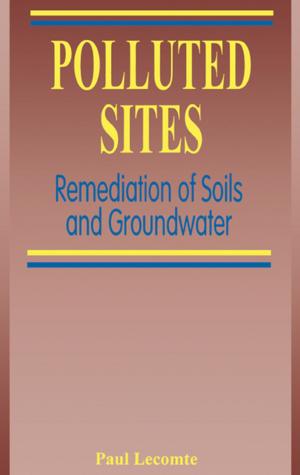| Author: | David C. Alexander | ISBN: | 9781351429221 |
| Publisher: | CRC Press | Publication: | November 1, 2017 |
| Imprint: | Routledge | Language: | English |
| Author: | David C. Alexander |
| ISBN: | 9781351429221 |
| Publisher: | CRC Press |
| Publication: | November 1, 2017 |
| Imprint: | Routledge |
| Language: | English |
As a well balanced and fully illustrated introductory text, this book provides a comprehensive overview of the physical, technological and social components of natural disaster. The main disaster-producing agents are reviewed systematically in terms of geophysical processes and effects, monitoring, mitigation and warning. The relationship between disasters and society is examined with respect to a wide variety of themes, including damage assessment and prevention, hazard mapping, emergency preparedness, the provision of shelter and the nature of reconstruction. Medical emergencies and the epidemiology of disasters are described, and refugee management and aid to the Third World are discussed. A chapter is devoted to the sociology, psychology, economics and history of disasters.; In many parts of the world the toll of death, injury, damage and deprivation caused by natural disasters is becoming increasingly serious. Major earthquakes, volcanic eruptions, droughts, floods and other similar catastrophes are often followed by large relief operations characterized by substantial involvement of the international community. The years 1990-2000 have therefore been designated by the United Nations as the International Decade for Natural Disaster Reduction.; The book goes beyond mere description and elevates the field of natural catastrophes to a serious academic level. The author's insights and perspectives are also informed by his practical experience of being a disaster victim and survivor, and hence the unique perspective of a participant observer. Only by surmounting the boundaries between disciplines can natural catastrophe be understood and mitigation efforts made effective. Thus, this book is perhaps the first completely interdisciplinary, fully comprehensive survey of natural hazards and disasters. It has a clear theoretical basis and it recognizes the importance of six fundamental approaches to the field, which it blends carefully in the text in order to avoid the p
As a well balanced and fully illustrated introductory text, this book provides a comprehensive overview of the physical, technological and social components of natural disaster. The main disaster-producing agents are reviewed systematically in terms of geophysical processes and effects, monitoring, mitigation and warning. The relationship between disasters and society is examined with respect to a wide variety of themes, including damage assessment and prevention, hazard mapping, emergency preparedness, the provision of shelter and the nature of reconstruction. Medical emergencies and the epidemiology of disasters are described, and refugee management and aid to the Third World are discussed. A chapter is devoted to the sociology, psychology, economics and history of disasters.; In many parts of the world the toll of death, injury, damage and deprivation caused by natural disasters is becoming increasingly serious. Major earthquakes, volcanic eruptions, droughts, floods and other similar catastrophes are often followed by large relief operations characterized by substantial involvement of the international community. The years 1990-2000 have therefore been designated by the United Nations as the International Decade for Natural Disaster Reduction.; The book goes beyond mere description and elevates the field of natural catastrophes to a serious academic level. The author's insights and perspectives are also informed by his practical experience of being a disaster victim and survivor, and hence the unique perspective of a participant observer. Only by surmounting the boundaries between disciplines can natural catastrophe be understood and mitigation efforts made effective. Thus, this book is perhaps the first completely interdisciplinary, fully comprehensive survey of natural hazards and disasters. It has a clear theoretical basis and it recognizes the importance of six fundamental approaches to the field, which it blends carefully in the text in order to avoid the p















